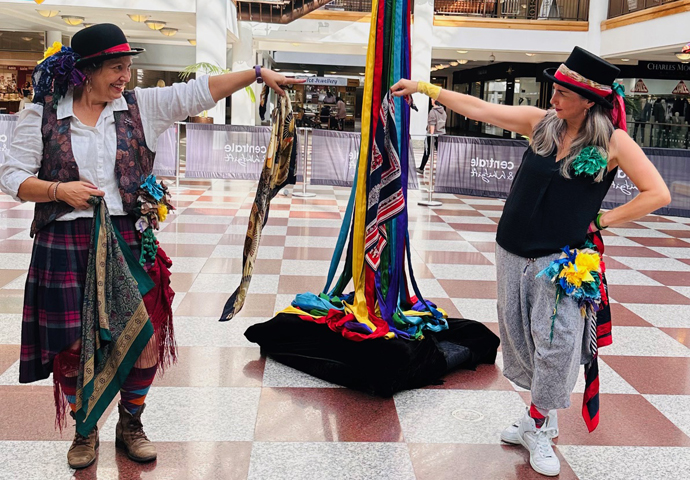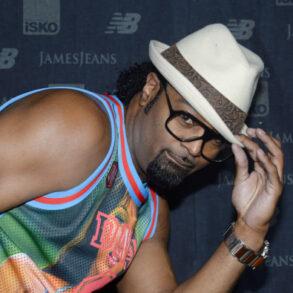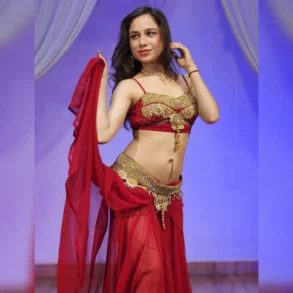
Kerry Fletcher and Natasha Khamjani
MORRIS dancing and breakdancing might appear to be a world apart in style and form, but they have shared cultural roots, and for Kerry Fletcher and Natasha Khamjani, finding the similarities between these two very different-looking styles of movement is key.
The pair run the Folk Dance Remixed dance company – and on Monday they will be bringing their eclectic mix of a traditional May Day Cèilidh fused with street dance to Camden High Street. As part of the Town Hall’s plan to pedestrianise a section of the high street, the council are holding a street party to mark Camden’s 60th anniversary as a borough.
And taking to the stage is Kerry and Natasha’s company.
The Folk Dance Remixed story began in the garden of Cecil Sharp House 15 years ago: the Primrose Hill institute is home to folk dance and music in the UK – and as the pair began to explore how styles and forms of dance from very different times and places had a raft of similarities, they decided to see what happens when you take traditional dance and blend it with breakdancing, locking and popping.
“The modern dance we look at, and all the different styles that come under that umbrella, is basically the folk dance of today,” says Kerry.
“People sometimes laugh at Morris dancers – they don’t really understand what they are doing, or why they are doing it. It can be seen as something strange, something quaint, maybe something not to take too seriously.”
Kerry grew up in a folk tradition. “My mum ran a folk club in Whitstable in the 1970s,” she recalls. “I was brought up going to cèilidhs, Morris dances, barn dances.”
Natasha studied ballet, modern jazz and tap: jobs included helping with choreography and performing at the London 2012 Olympics.
In the build-up to the Olympics, there was a national dance campaign called The Big Dance, which brought dancers into public spaces and helped people learn more about steps and styles.
Kerry and Natasha set up a five-day workshop in Cecil Sharp House that brought together percussionists and musicians alongside folk dancers, hip hop dancers and street dancers. The results were explosive and prompted the couple to establish a professional dance company that would tie these forms together.
They designed a dance called Step Hop House, which brings together elements of a cèilidh with modern dance forms and have been performing it across the UK.
“It brings a lot of joy – when people come across what we are doing, their eyes open,” says Kerry.
“People love the connectivity, the holding of hands. When we have done sessions at festivals people have really loved it – they have found they have given themselves permission to skip about, you dance together, to have fun.”
Designing a way to bring a folk dance together to new forms of movement begins with the music, says Kerry.
“I will listen to a folk tune or a contemporary piece of music and we think: what can we do with this? What does it lend itself to?
“There are lots of different rhythms and we look at what we can tie together – a 6/8, a 4/4. We look at the different types of rhythm you get on the folk side, we look at steps, frequencies and patterns, we look at what are common styles – we have so many different rhythms to play with and what we choose dictates what styles we bring together.”
By combining folk with street dance, the company brings together a range of dancers.
“We are a culturally diverse dance company – and we love the way audiences see themselves in our group,” adds Natasha. “They recognise themselves and that is really powerful – it can help bring disadvantaged communities into this art form. And it means we have a wide pool of skills that are brought into our shows. The folk and street dancers mix it up and help each other.”
And part of the concept is to recognise how street dance today is a form of modern folk music.
“This helps the dances feel alive,” adds Kerry. “Around the world, folk dance became an expression of a people, often people who have been oppressed and it played a role in maintaining a cultural identity and freedom.”
• For more details visit folkdanceremixed.com
This post was originally published on this site be sure to check out more of their content.




